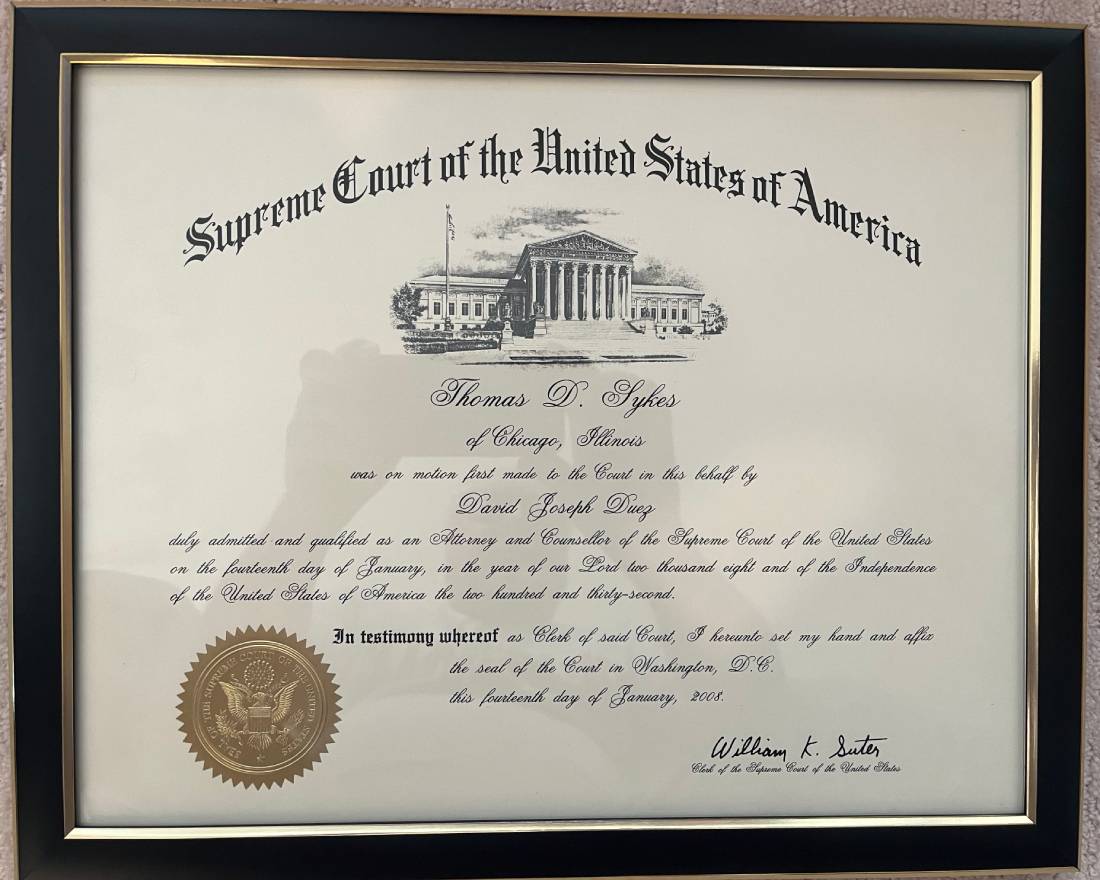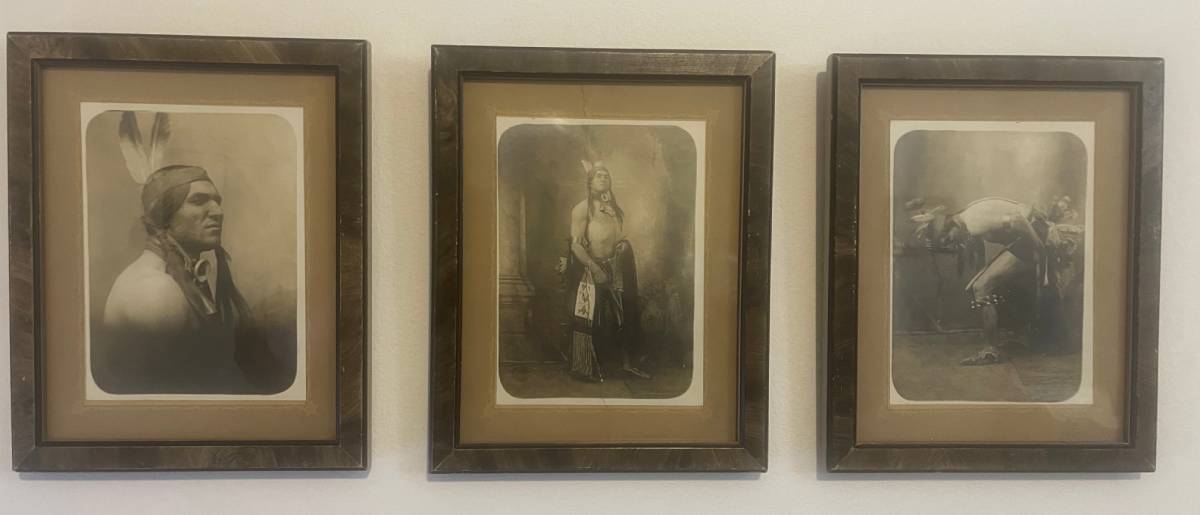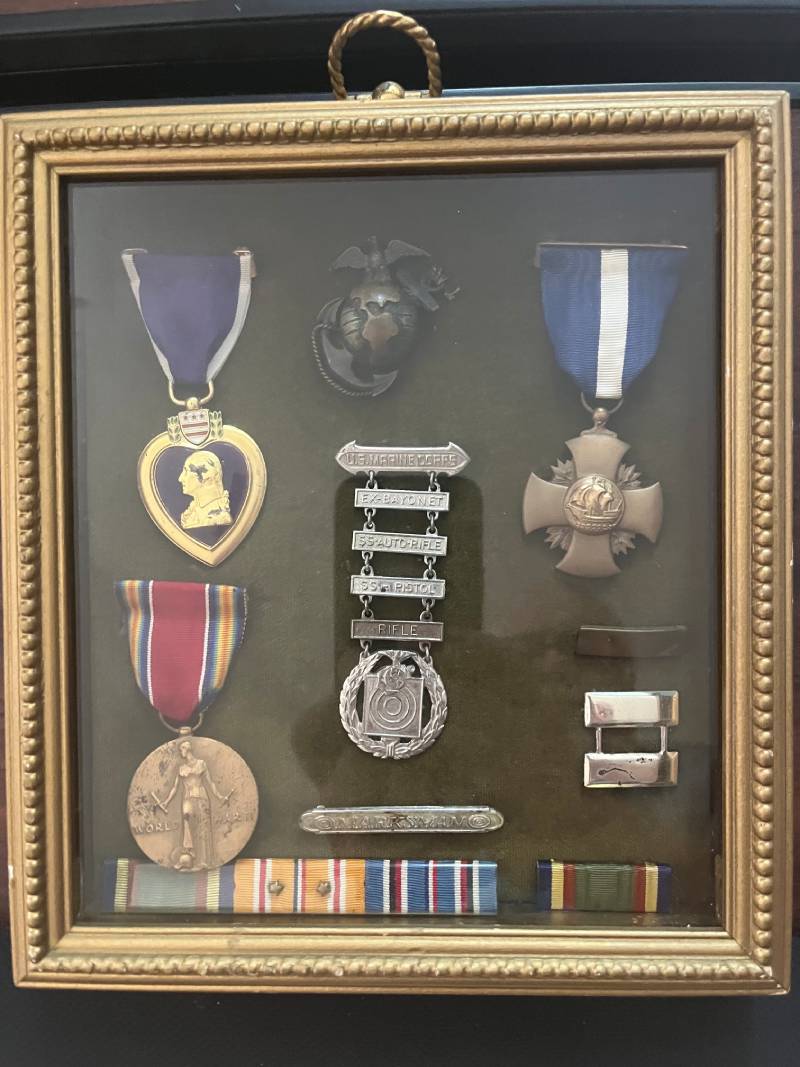- Within seven months of graduating from Ohio State’s College of Law at age 24, Tom became the youngest District Attorney in the State of Wisconsin when appointed to the post by the late Governor Lee S. Dreyfus, Sr. Then, at age 26, Tom won a contested election to retain that post. At age 27, after having tried a dozen criminal jury trials and eschewing a political career, Tom resigned from that elective, constitutional post to take an appointment from U.S. Attorney General William French Smith to a position as a federal prosecutor in Madison, Wisconsin — a move that commenced an award-winning 17-year career with the Department of Justice, mostly spent in DC.
- As a second-year law student, Tom wrote a top paper for an Evidence seminar taught by the College of Law’s former Dean. The former Dean, a former Editor-in-Chief of the Ohio State Law Journal, recommended that Tom seek to have the paper published there. Publication occurred in 1980. 41 Ohio St. L.J. 211 (1980). The Ohio State Law Journal is the College of Law’s flagship law review. His article has been cited in the law reviews of at least nine other law schools. Only a tiny percentage of lawyers can claim that they published a piece, written while a student, in their law school’s flagship law review — especially one at a Top 30 law school. Tom’s law review piece was the first of over two dozen articles that he would go on to publish in legal and tax publications.
- While in private law-firm practice in DC, Chicago, and now Redmond, Tom has never held any position other than partner, shareholder, or managing member; he was never an associate or counsel.
- Tom’s name appears as counsel on over 60 reported federal court opinions, almost all of which show him acting in a first-chair capacity.

- Tax endures and expands: On the left (see below) is a 128-page federal tax guidebook from 1921, written by very early Chicago tax lawyers. On the right is a stack of books that set out the federal tax statutes and regulations as they exist today — about 80,000 pages of fundamental, primary-source federal tax law. The 1921 and the 2021 books were published by the same durable, tax-focused Chicago publisher, Commerce Clearing House.

- “The hardest thing in the world to understand is the income tax.” — Albert Einstein, chuckling, to his accountant, Leo Matterhorn.

- Of the 1.3 million lawyers in the U.S., about 22,000 — or 1.7 percent — are tax lawyers.
- An avid golfer since age 12, Tom has had two holes-in-one — the first in 1982, and a second in 2022. He is the recent producer of a series of 14 YouTube videos on Wilson Dyna-Powered golf wedges made between 1956-1975 — heavy, forged, hand-ground clubs that once ruled the professional golf world; that were coveted by Tom when he was 16 years old and playing on nine-hole courses in rural Wisconsin; and that display craftsmanship that fascinates him to this day. The video is a definitive reference work, produced for avid golfers and club collectors. Data-driven technical guide, reflecting information that is unavailable anywhere else. The trailer for his 14 episodes is at: https://youtu.be/OLq8h6bAy6M. Tom is producing a similarly definitive video with respect to Wilson’s premium, highly coveted, and rare Haig Ultra line of clubs made between 1956 and 1965.
- Tom is the recent producer of a set-the-record-straight YouTube video about William Henry “Lone Star” Dietz (1884-1964), a trailblazing Native American who was the first head coach of the NFL team formerly known as the Washington Redskins. Over the last 15 years, Mr. Dietz’s claim of Native American lineage was gratuitously disputed by activists opposed to the name of that team, now known as the Washington Commanders. Coarse activists and sympathetic journalists called Mr. Dietz a “liar,” “faker,” “phony,” “imposter,” “fraud,” and so on. But a triptych of professionally taken photographs, c. 1905-1908, depicting Mr. Dietz, then in his early 20s, in elaborate Native American brave regalia, has recently emerged from the rural Wisconsin locale where both Mr. Dietz and Tom grew up. This triptych, given by Mr. Dietz to a childhood friend, was a courageous, youthful self-proclamation of a Native American lineage — made in his early 20s and in the early 1900s when animus toward Native Americans was fairly rampant. He could have comfortably passed for white; he was raised in the home of a white Sheriff of Barron County, Wisconsin. Mr. Dietz’s youthful self-proclamation refutes the smears against him and supports his 60-year claim of a Native American lineage. Egregiously, coarse activists and sympathetic journalists also have mischaracterized the meaning and effect of a “no contest” plea that Mr. Dietz made in 1919 to possibly race-driven federal charges filed in Spokane, WA, charging him with evading the draft when he claimed an exemption based upon his Native American heritage. This dubious federal prosecution brings to mind the unfair treatment experienced at about the same time by another Native American, the peerless Jim Thorpe — Mr. Dietz’s friend and teammate on the Carlisle Institute’s amazing football team. Tom, a former federal prosecutor, demonstrates that a no contest plea neither admits guilt nor any facts establishing guilt. Modern activists and journalists never should have dredged up, long after Mr. Dietz’s death, that irrelevant no-contest plea in attacking his 60-year claim of Native American heritage. Actually, Mr. Dietz was talented, accomplished, and courageous, and ought to be celebrated: he was a protege of the innovative coach, Charles Scobey “Pop” Warner; was himself the only football coach to have guided the Pac12’s Washington State University to a Rose Bowl victory (in 1916), and did so at age 32; guided the U.S. Marine Corps’ Mare Island team to a Rose Bowl victory in 1919; was the first head coach, in 1933-1934, of the NFL’s Commanders; and is a member of the College Football Hall of Fame. He deserves widespread acknowledgment and respect. Tom hopes that his evidence- and law-based video will help restore admiration for this courageous, trailblazing, and accomplished but disrespected Native American. The Native American Guardians Association (NAGA) has stated that it agrees with Tom’s analysis and is grateful for his contribution to the discussion. Tom’s video may be seen at: https://youtu.be/7rrLPJ9-o18.

Ca. 1905 – 1908.
- Tom is the holder of two U.S. utility patents for a computer-related device that he invented in the early 1990s. U.S. 6,962,311, and U.S. 6,648,282. Both patents were awarded after Tom, representing himself, appealed adverse determinations made by the Patent and Trademark Office’s examiner. Although not a patent lawyer, Tom prevailed almost completely in both of the appeals which he briefed and argued before the former Board of Patent Appeals and Interferences (BPAI).
- Tom’s mother grew up in a Wisconsin Gold Star family: Tom is a proud nephew of the late USMC Capt. Maurice R. Amundson. Capt. Amundson, at age 24, was the Commanding Officer of Company G, 22nd Marines, which spearheaded the operation to recover the fiercely defended Orote Peninsula during the Second Battle of Guam in July 1944. Captain Amundson, the grandson of immigrants and a graduate of St. Olaf College, was KIA in that operation and posthumously awarded, by the President, the Navy Cross, rarely awarded and the nation’s second-highest military award for valor (shown below, upper right; second in prestige only to the Congressional Medal of Honor). He is among the 32,000 service members buried at the National Memorial Cemetery of the Pacific, in Honolulu. The only son of a widow and a brother to three sisters, he enlisted in the Marines after graduating from St. Olaf College in 1941. A monument and 40-foot flagpole with yardarm and flags for all military branches stands at the VFW Post in Barron, Wisconsin, to honor Capt. Amundson’s service and sacrifice. Guam, a U.S. Territory, is now a strategic bulwark against Communist aggression in the South China Sea.

- In Memoriam: In the small (pop. 1,878), rural Wisconsin village where Tom grew up, located in the county where Tom was the District Attorney (1980-82), two police officers were slain while making a traffic stop. Shocking on so many levels, this incident occurred during the afternoon of April 8, 2023. Tom’s thoughts and prayers are with the slain officers, their families, and their law-enforcement colleagues. To deter the dangerous, too often deadly, chaos created when a person resists or flees an officer, Tom has long advocated minimum mandatory jail or prison sentences for persons convicted of resisting a lawful arrest or fleeing a traffic stop, with incarceration enhancements added if the person brandished or used a weapon during the incident.
- A magna cum laude graduate with a History major, Tom occasionally submits online posts and letters to the editor emphasizing that the United States was the first nation ever, anywhere, to enact a statute prohibiting slavery. That statement bears repetition. Tom calls attention to the oft-overlooked Northwest Ordinance of 1787: it prohibited the importation of slaves into the Northwest Territory, a territory ceded to the fledgling nation by Britain in the Treaty of Paris in 1783. That territory encompassed the future powerhouse states of Ohio, Indiana, Michigan, Illinois, Wisconsin, and part of Minnesota. This original, seminal law was hugely consequential, setting the stage for the Union victory in the Civil War. The Territory’s six states each prohibited slavery in their own constitutions and later provided soldiers who formed the backbone of the Union Army, including the peerless Iron Brigade (suffering casualties at a rate of 77 percent). The Northwest Ordinance was enacted a mere 99 years after Quakers at Germantown, PA, petitioned their colonial government to abolish slavery and recognize universal human rights — the first petition in the New World asking a government to abolish slavery. (Among the four Quakers signing the 1688 petition, now on display at Haverford College, was a relative of Tom’s spouse.) Slavery had existed for millennia and even exists today in some parts of the world. The July 13, 1787, enactment occurred with remarkable dispatch, just four years after Britain ceded the Northwest Territory to the fledgling Nation; and occurred contemporaneously with the drafting of the U.S. Constitution. As a lawyer, Tom feels obliged and honored to defend our Nation’s Founders, authors of the Constitution and the Northwest Ordinance, with fair and fact-based arguments. He believes that July 13th easily warrants designation as a national holiday celebrating the Founders’ monumental, unprecedented, and history-altering achievement.
